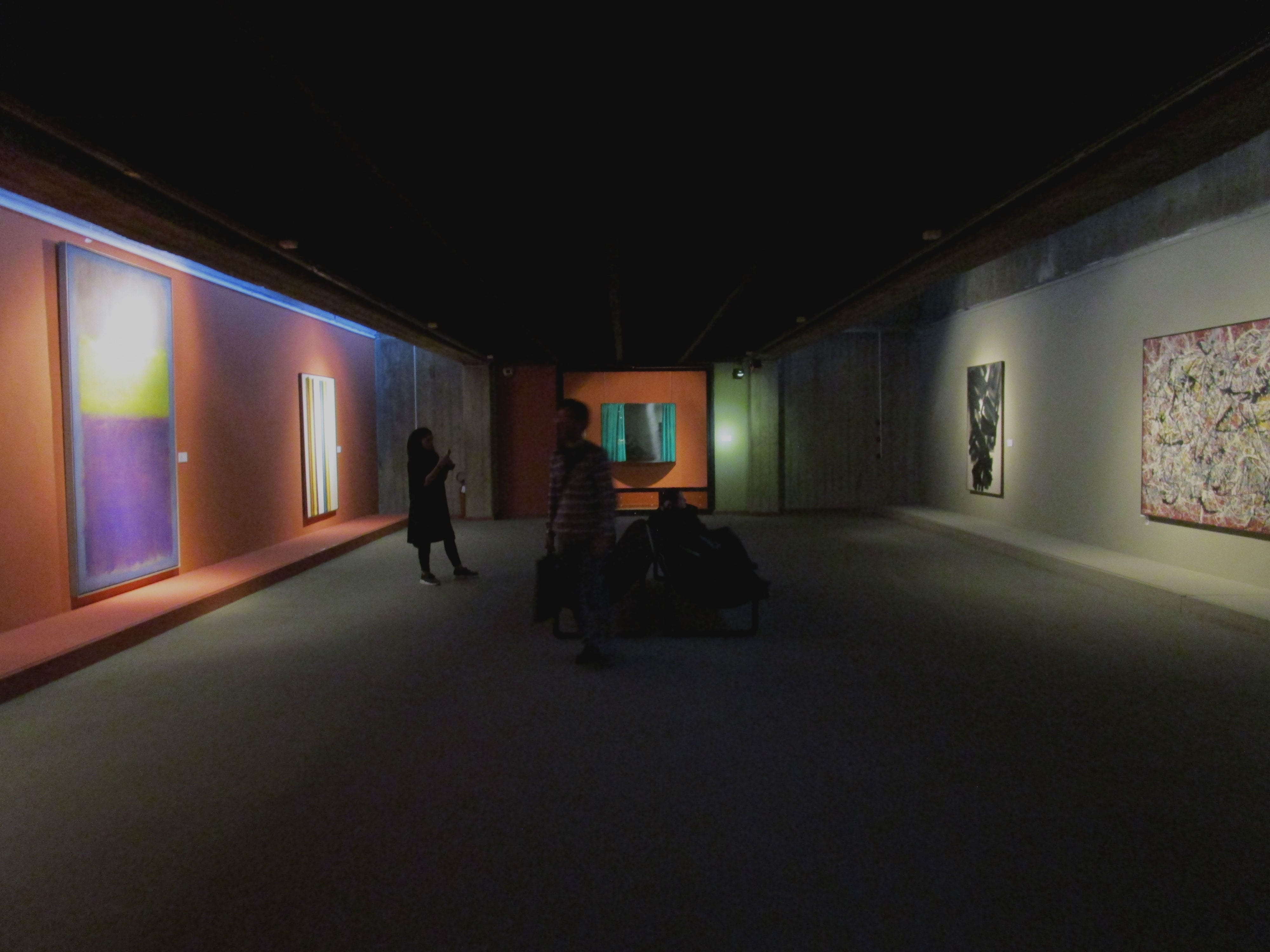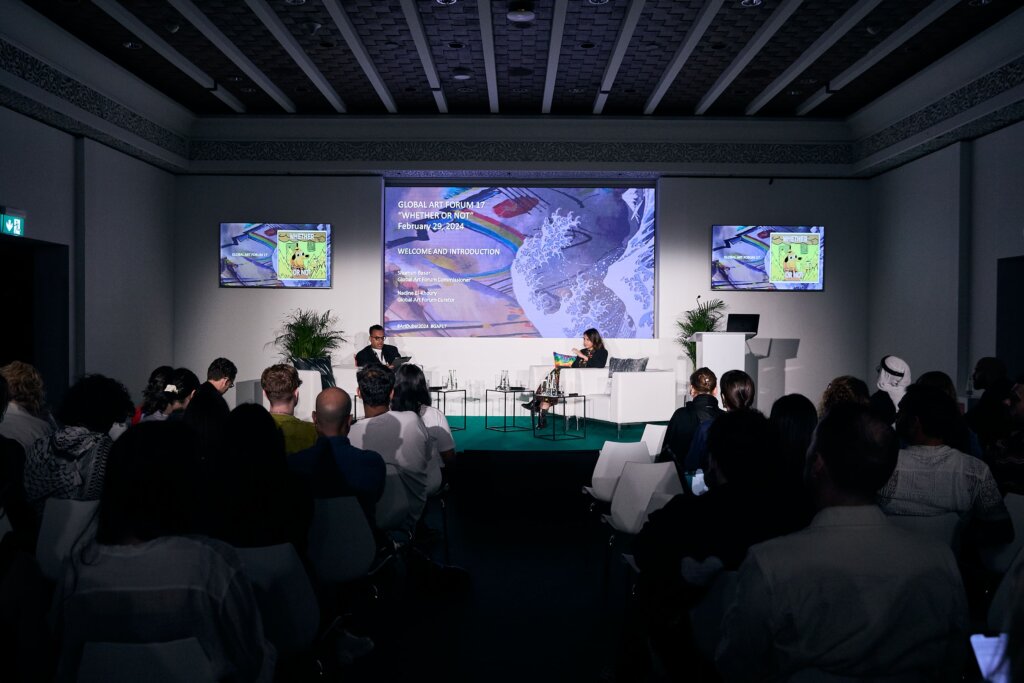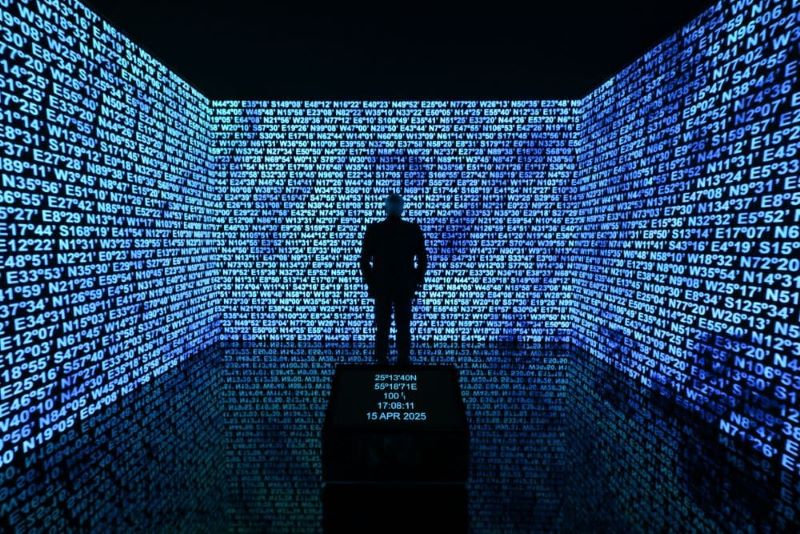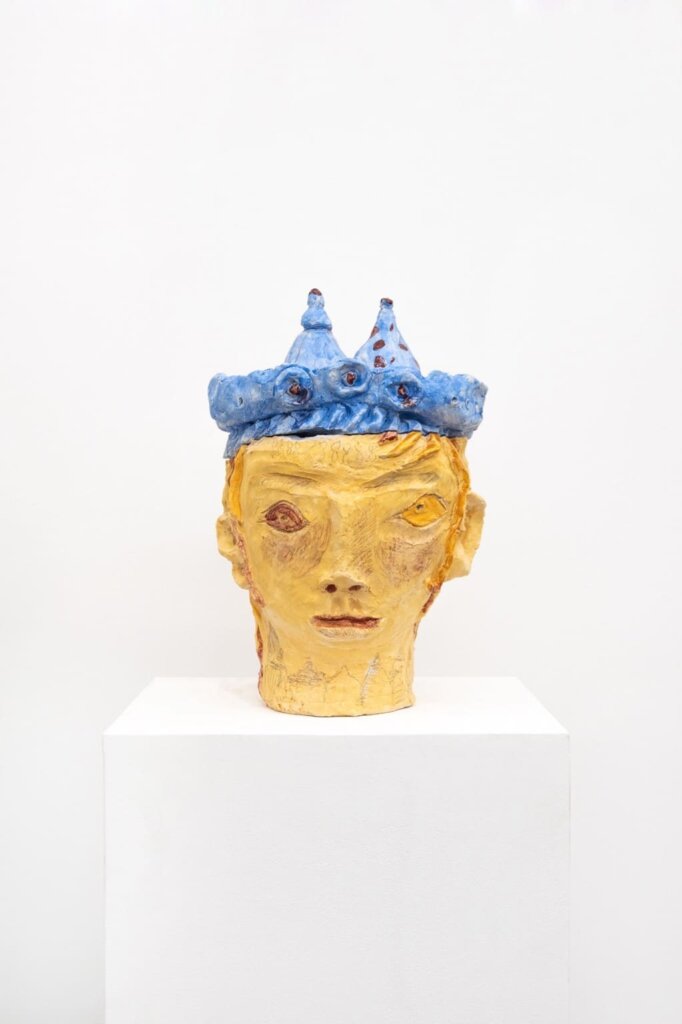Myrna Ayad
Currently hanging at the Tehran Museum of Contemporary art is Jackson Pollock’s Mural on Indian Red Ground, a 180 x 240 cm masterpiece by the late abstract expressionist artist. Acquired in the 1970s by Her Majesty Farah Pahlavi, wife of the Shah of Iran, the 1950 painting is part of priceless collection of post-war works from the West amassed by the former Empress for the museum, which opened in 1977. Other works acquired in the same time include those by Willem de Kooning, Mark Rothko, René Magritte, Andy Warhol, Roy Lichtenstein, Pablo Picasso, Jasper Johns, Robert Rauschenberg, Max Ernst and Donald Judd, among many more.
‘Mural on Red Indian Ground’ by Jackson Pollock. Courtesy Jackson Pollock Estate.
The idea to build a museum focused on contemporary art was conceived in the 1970s when Pahlavi considered a space to house the works of Iran’s contemporary artists that would sit side by side with their Western counterparts. Using Iranian petrodollars at the height of the country’s oil boom, the Empress’s cousin, architect and initial director of TMoCA, Kamran Diba, designed the museum that sits next to Farah Park (now renamed to Laleh Park) and which, while takes inspiration from Persian architecture, resembles the Guggenheim in New York.
With input from Karim Pasha Bahadori, chief of staff of the cabinet, Diba’s expertise, curatorial contribution from Fereshteh Daftari, Donna Stein and David Galloway, as well as support from individuals including Iranian artist Parviz Tanavoli and New York dealer Tony Shafrazi, among others, the collection began to form. Largely considered the most important collection of Western art outside the West and reportedly worth $3 billion, TMoCA is also home to a reputed collection of works by some of Iran’s greats, including Bahman Mohasses, Monir Farmanfarmaian, Behjat Sadr, Leyly Matine-Daftari, Sohrab Sepheri, Ardeshir Mohasses, Aydin Agdashloo and Charles Hossein Zenderoudi. Pahlavi also made trips to Europe and the USA and met with artists such as Henry Moore, Salvatore Dalí, Marc Chagall, and Warhol, who created portraits of her, the Shah and the Shah’s twin sister, Princess Ashraf.
Works by Andy Warhol, both from 1965
The idea to build a museum focused on contemporary art was conceived in the 1970s when Pahlavi considered a space to house the works of Iran’s contemporary artists that would sit side by side with their Western counterparts. Using Iranian petrodollars at the height of the country’s oil boom, the Empress’s cousin, architect and initial director of TMoCA, Kamran Diba, designed the museum that sits next to Farah Park (now renamed to Laleh Park) and which, while takes inspiration from Persian architecture, resembles the Guggenheim in New York.
With input from Karim Pasha Bahadori, chief of staff of the cabinet, Diba’s expertise, curatorial contribution from Fereshteh Daftari, Donna Stein and David Galloway, as well as support from individuals including Iranian artist Parviz Tanavoli and New York dealer Tony Shafrazi, among others, the collection began to form. Largely considered the most important collection of Western art outside the West and reportedly worth $3 billion, TMoCA is also home to a reputed collection of works by some of Iran’s greats, including Bahman Mohasses, Monir Farmanfarmaian, Behjat Sadr, Leyly Matine-Daftari, Sohrab Sepheri, Ardeshir Mohasses, Aydin Agdashloo and Charles Hossein Zenderoudi. Pahlavi also made trips to Europe and the USA and met with artists such as Henry Moore, Salvatore Dalí, Marc Chagall, and Warhol, who created portraits of her, the Shah and the Shah’s twin sister, Princess Ashraf.
A monumental work by Iranian modernist Sohrab Sepehri
TMoCA officially opened to the public in the fall of 1977 amidst a bleak national atmosphere due to grim political tensions. A little over a year later, the Islamic Revolution swept the nation. The Pahlavis were exiled, Khomeini came into power and the prized artworks were locked in a vault in TMoCA. There, they remained, untouched, unrestored and out of sight for over 25 years. It was during the reign of Iran’s liberal fifth president Seyyed Mohammad Khatami (ex Minister of Culture for a decade) and the directorship of the British-educated Dr Ali Reza Sami Azar, that the collection (though not in its entirety) was exhibited in 2005. The event not only created headlines around the world, but also reignited a spirit in Iran’s cultural community. By this time, the country’s art scene was exploding and the staging of this seminal show gave hope to many: there was a resounding sensation that the local art scene was being supported.
With the change in leadership, both at the museum and in the country’s presidency, many felt that TMoCA’s direction became incoherent, its shows haphazard and inconsistent in quality and content. It is in recent years that a renaissance can be felt, beginning with Farideh Lashai’s 2015 landmark retrospective co-curated by the artist’s friend, Iranian-born Faryar Javaherian and Germano Celant, the Italian ‘super curator’, who coined the term ‘Arte Povera’. The duo juxtaposed Lashai’s works with those of her Western counterparts, taking pieces out of the vault and which had, by then, appeared in dire need of restoration. Some of the art world’s greatest movers and shakers flew to Tehran to see this momentous exhibition and news broke of TMoCA’s collection of Western and Iranian art traveling to Berlin’s Prussian Cultural Heritage Foundation in 2016. Mere days before the collection was set to travel, it was announced that the show was cancelled, citing financial difficulty. A little more than a month ago, TMoCA staged the proposed traveling show at its premises – where Pollock’s painting hangs alongside numerous others, which German and international audiences, as well as Pahlavi herself, were no doubt, eager to see. While the museum does not announce its programming in advance, news has spread of a show for Tanavoli in July with works loaned from the National Museum of Iran.
Seminal works by abstract expressionist artists Mark Rothko (left) and Jackson Pollock (right)
Exterior of TMoCA with two sculptures by Alberto Giacometti in the background and one by Marino Marini in the foreground
Interior of TMoCA with a mobile by Alexander Calder hanging in the center



















